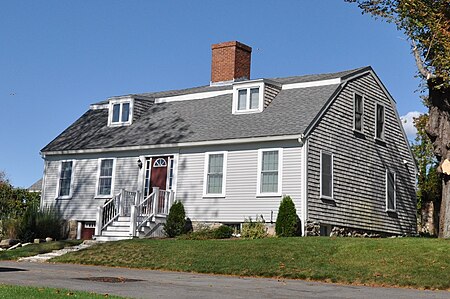Clifford–Warren House
1695 establishments in the Province of Massachusetts BayHouses completed in 1695Houses in Plymouth, MassachusettsHouses on the National Register of Historic Places in Plymouth County, MassachusettsNational Register of Historic Places in Plymouth County, Massachusetts ... and 1 more
Plymouth County, Massachusetts Registered Historic Place stubs

The Clifford–Warren House is an historic First Period house at 3 Clifford Road in Plymouth, Massachusetts. The 1+1⁄2-story gambrel-roofed Cape style house was built c. 1695. It is five bays wide, with a large central chimney. The house is believed to be the third on the property, which was granted to Richard Warren in 1627. Its most notable resident was probably James Warren, a noted political opponent of British rule and a Major General in the Continental Army.The house was listed on the National Register of Historic Places in 1980.
Excerpt from the Wikipedia article Clifford–Warren House (License: CC BY-SA 3.0, Authors, Images).Clifford–Warren House
Warren Avenue, Plymouth
Geographical coordinates (GPS) Address Nearby Places Show on map
Geographical coordinates (GPS)
| Latitude | Longitude |
|---|---|
| N 41.938888888889 ° | E -70.617777777778 ° |
Address
Warren Avenue 171
02360 Plymouth
Massachusetts, United States
Open on Google Maps






